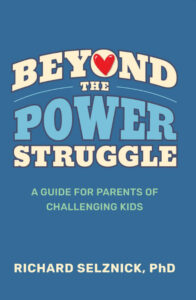 A number of years ago, I had the good fortune to take part on a panel during a symposium on dyslexia sponsored by the grassroots parenting group, Decoding Dyslexia: NJ. Dr. Sally Shaywitz, the author of “Overcoming Dyslexia” was the keynote speaker. While talking about assessing dyslexia, Dr. Shaywitz said something that really struck me, as it reminded of something I had been saying for years.
A number of years ago, I had the good fortune to take part on a panel during a symposium on dyslexia sponsored by the grassroots parenting group, Decoding Dyslexia: NJ. Dr. Sally Shaywitz, the author of “Overcoming Dyslexia” was the keynote speaker. While talking about assessing dyslexia, Dr. Shaywitz said something that really struck me, as it reminded of something I had been saying for years.
As she stated, “Dyslexia is not a score.” That statement is right on the money.
In the assessment of dyslexia, scores are certainly involved. Tests such as the Woodcock Reading Mastery Test, the Tests of Word Reading Efficiency and the Comprehensive Tests of Phonological Processing, among other standardized measures yield reliable and valid standard scores, grade equivalents and percentiles. Such scores can be helpful markers in the diagnosis.
However, the scores often don’t tell the whole story. Here’s one example:
Jacob, a fifth grader, is in the 60th %ile of verbal intelligence and his nonverbal score is in the 75th % percentile, meaning Jacob’s a pretty bright kid. Jacob’s word identification standard score on the Woodcock placed him in the lower portion of the average range, with similar word attack and passage comprehensions scores.
Jacob’s scores would not have gotten the school too excited since the sores clustered in the average range. Yet, here’s what I told the mom.
“There’s a lot of evidence in Jacob’s assessment that suggests that he is dyslexic. Even though his scores are fundamentally average, he was observed to be very inefficient in the way that he read. For example, while Jacob read words like “institute,” and “mechanic” correctly, he did so with a great deal of effort. It was hard for Jacob to figure out the words. For those who are not dyslexic, word reading is smooth and effortless. Those words would be a piece of cake for non-dyslexic fifth graders. They were not for Jacob.”
“Even more to the point was the way that Jacob read passages out loud. Listening to Jacob read was almost painful. Every time he came upon a large word that was not all that common (such as, hysterical, pedestrian, departure) he hesitated a number of seconds and either stumbled on the right word or substituted a nonsense word. An example was substituting the word “ostrich” for “orchestra.” The substitutions completely changed the meaning.
“Finally, the two other areas of concern involved the way that Jacob wrote, as well as his spelling. While Jacob could memorize for a spelling test and get good grades, his spelling and his open ended-writing were very weak. The amount of effort that Jacob put into writing a small informal paragraph was considerable. There also wasn’t one sentence that was complete.”
“Even though Jacob is unlikely to be classified in special education because of his scores, I think he has a learning disability that matches the definition of dyslexia as it is known clinically (see International Dyslexia Association website: www.dyslexiaida.org). The scores simply do not tell the story.”
Takeaway Point:
You need to look under the hood to see what’s going on with the engine.
With dyslexia, you can’t just look at the scores and make a conclusion.
“Dyslexia is not a score.”
Feel free to make comment below.
To receive future blog posts, register your email: https://shutdownlearner.com.
To Contact Dr. Richard Selznick for advice, consultation or other information, email: shutdownlearner1@gmail.com.

 Copyright, Richard Selznick, Ph.D. 2023, www.shutdownlearner.com.
Copyright, Richard Selznick, Ph.D. 2023, www.shutdownlearner.com.
